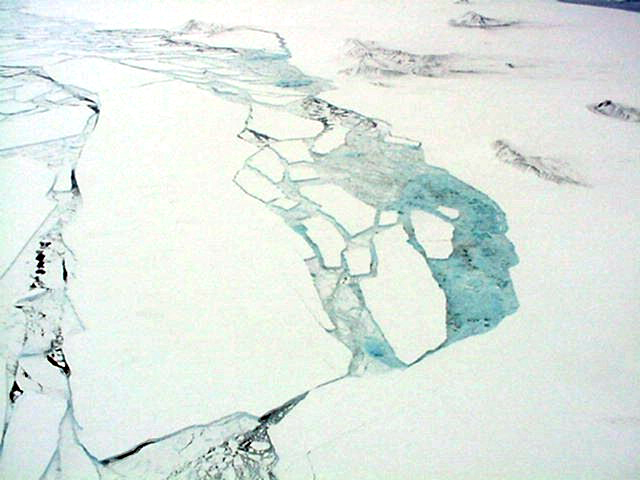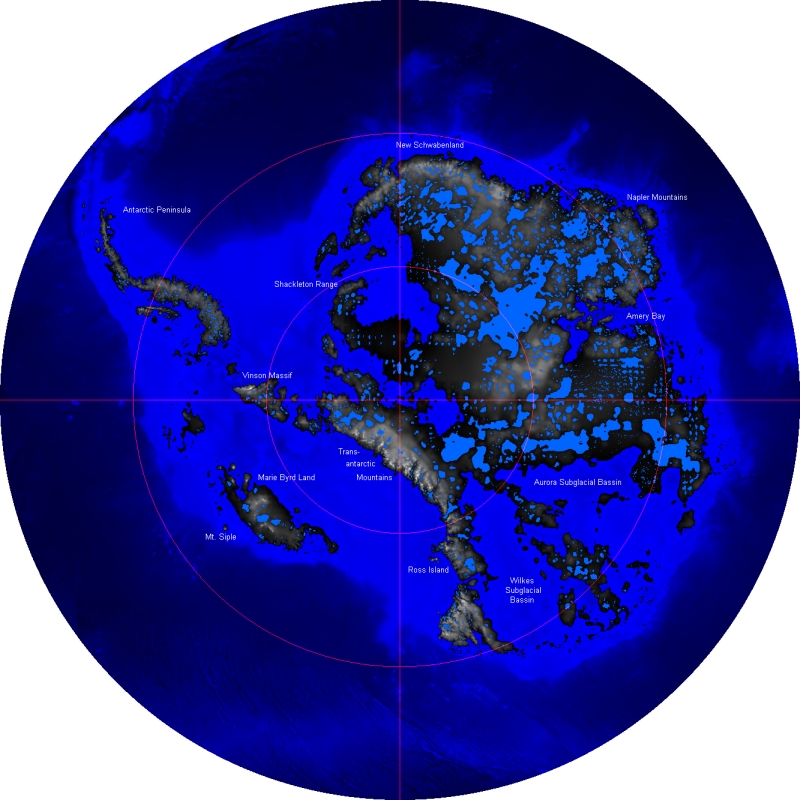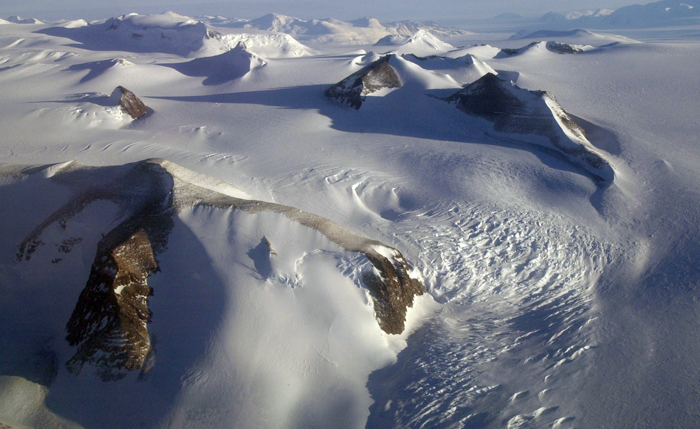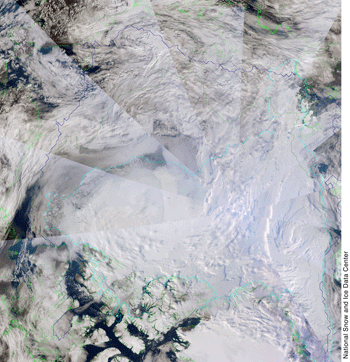
Photo Credit: Pedro Skvarca, Instituto Antártico Argentino/courtesy NSIDC |
A large chunk of the Larsen B ice shelf, seen here, collapsed in 2002. Six years later, a piece of the Wilkins ice shelf disintegrated, and the remainder of the ice shelf is hanging by a thread. Scientists say warming along the Antarctic Peninsula is to blame, while the large ice sheet of East Antarctica appears to be stable, possibly because of the presence of the ozone hole. |
Hot and cold
In particular, Antarctica remains an enigma. A recent NASA-led study said that the rate of Antarctic ice loss increased by 75 percent in the last 10 years as glacier flow accelerated. That study’s lead investigator, Eric Rignot of NASA’s Jet Propulsion Laboratory, noted that last year’s report by the IPCC did not properly account for Antarctica’s role in sea level rise estimates. His team estimated Antarctic ice loss is now nearly as great as that observed in Greenland.
On the flip side, a recent paper by researchers at OSU and the National Center for Atmospheric Research in Boulder, Colo., found current climate models of Antarctica consistently overstate warming.
The study, published in Geophysical Research Letters and funded by the National Science Foundation and the Department of Energy, compared recently constructed temperature data sets from Antarctica, based on information from ice cores and ground weather stations, to 20th century simulations from computer models used by scientists to simulate global climate.

Photo Credit: Wikipedia Commons
A model of Antarctica stripped of its ice sheets. The model does not account for sea level rise or the uplift of bedrock after the weight of the ice sheets has been removed.

Photo Credit: Kristan Hutchison
The Transantarctic Mountains effectively divide East and West Antarctica.

Photo Credit: NSIDC
A composite satellite image of Arctic sea ice in September 2007, when it reached its minimum extent. Scientists predict it will hit a new low in 2008.
While the observed Antarctic temperatures rose by about 0.2 degrees Celsius over the past century, the climate models simulated increases in Antarctic temperatures during the same period of 0.75 degrees Celsius, nearly matching the observed increase of global temperatures that the models reproduce accurately.
“They’re not doing great,” says David Bromwich of the computer models. A professor of atmospheric sciences in OSU’s Department of Geography and a researcher at BPRC, Bromwich explains that the Antarctic climate has not warmed like the rest of the globe due, in part, to the strengthening of winds around the continent. That strengthening is driven by a combination of the Antarctic ozone hole in the stratosphere, increased greenhouse gases and internal climate variability across the continent.
“Stratospheric ozone depletion has extended the winter season by about a month. It is having an effect on the troposphere,” he says. “There is a big contrast between the peninsula and the mainland, and that’s where all the water is sitting in frozen form.”
The troposphere is the part of the atmosphere where weather occurs. Sitting above that is the stratosphere, where ozone concentrations have diminished because of human activity.
“We don’t know how any of these factors will evolve during the coming century, and therefore there is still considerable uncertainty as to how much warming will occur in Antarctica,” he says.
So, on the one hand, climatic changes around the Antarctic Peninsula and elsewhere across the globe are occurring more rapidly than the models can predict. But the main body of the continent, bigger than the United States, has not kept pace with the models. Yet another recent paper, published in the journal Nature, contends that as the ozone hole recovers, the immunity from the greenhouse effect enjoyed by much of Antarctica may disappear.
“Antarctica is a pretty complicated place,” Bromwich concedes.
The models are lacking details. “Fundamentally, from a science point of view, it shows that we don’t have a good handle on the processes,” says Terry Wilson, a professor in OSU’s School of Earth Sciences and another researcher at BPRC whose research often relates to climate change. She adds the caveat: “Yet.”
“All of the research, and certainly this focused research during [the International Polar Year], is really going to make a significant difference in our understanding of the processes in these complex systems,” she adds.
Back 1 2 3 Next








